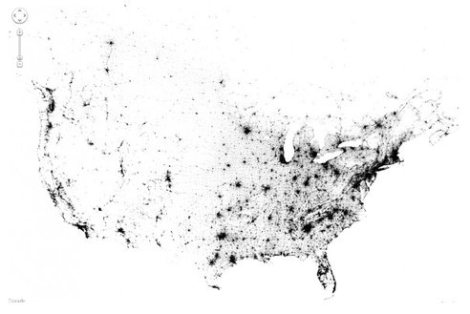Even if dorking out on maps isn't your idea of a good time, this one's definitely worth a look.
It's a dot map of every person counted by the 2010 US and 2011 Canadian censuses. 341,817,095 unique individuals, to be exact. And each person - every last man, woman, and child - is represented by a single point (click "show labels" at right to see location names as well).
It's like pointillism on steroids (take that, Seurat!).
The map is the handiwork of software engineer Brandon Martin-Anderson, who says he sought to produce "an image of human settlement patterns unmediated by proxies like city boundaries, arterial roads and state lines."
So what does this map tell us?
